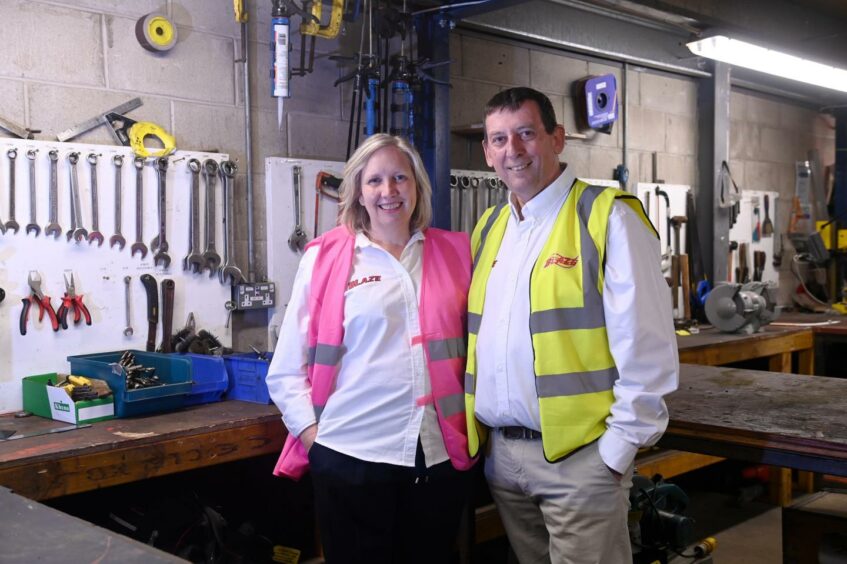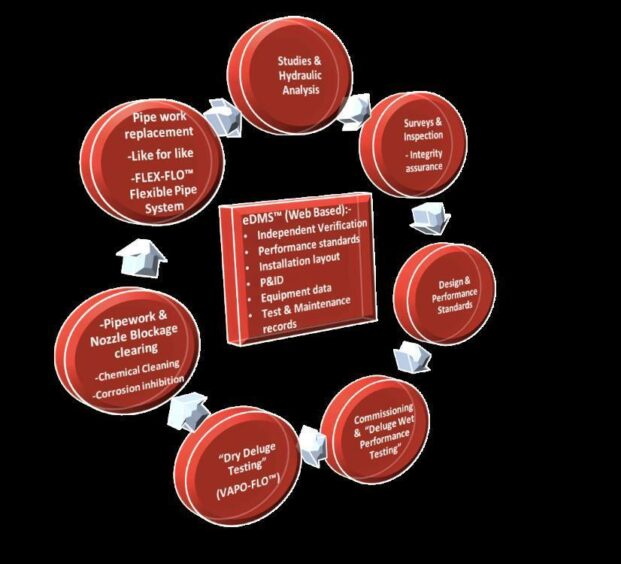
Many of the engineering resources at Blaze have been in the fire protection industry for decades and we have seen pretty much all the problems with designing, operating, and maintaining fixed fire protection systems in marine environments, from the challenges of material selection to corrosion and scale formation that led to nozzle blockages.
For any system to ultimately be considered effective it must fulfil its primary objective of cooling equipment, cooling unburnt combustion gases, block radiant heat transfer and reducing the oxygen at the seat of a fire. These mechanisms will collectively result in a fire being brought rapidly under control.
A key factor to success is that the fire water needs to arrive at its designated target and, to do that, nozzle alignment and the number of blocked nozzles are critical parameters in system effectiveness. Uneven distribution of water may result in equipment having the potential to cause asymmetric stresses in the vessel wall, leading to possible catastrophic failure in a very short time span.
During routine maintenance and performance testing, it is essential that the number of blocked nozzles and the pattern of blockage is measured and recorded. Industry testing has established that a considerable amount of the water directed at the object may miss the actual target. Therefore, an application rate calculated as the amount of water leaving the nozzles divided by the tank surface area is a poor measure of how well an object is protected by the system.
eDMS is a web based holistic approach that considers all the quantifiable data held for the water based fire systems and facilitates reliability centred maintenance regimes in line with the safety criticality levels demanded for such systems. However, it is not as simple as turning the firewater system on and allowing the system to freely discharge water over the plant and equipment as this will result in accelerated corrosion of the plant.
Blaze is a recognised subject matter expert in the delivery of water-based fire protection systems and this has seen us successfully transition into new markets, such as offshore wind and nuclear, deploying the technologies and competencies that we have developed.
The VAPO-FLOTM dry testing system was established to support wet testing regimes and is one of the tools in our arsenal of managing fire system performance and reducing the wet testing of systems that ultimately can result in:
· accelerated corrosion of the process plant, as water will be trapped under insulation
· corrosion and scale formation within distribution pipework
· false plant alarms may result from water ingress into key electrical equipment and instruments
Once performance of the firewater system has been verified, a regime of VAPO-FLO™ dry deluge testing can be established delivering pressurised smoke through the deluge system. This allows nozzle blockages to be visually identified in less time and with reduced impact than that realised from any wet testing criteria. This significantly reduces the overall time and potential impact to verify system performance.
When / if nozzle blockages are identified, boroscope inspection techniques will enable rapid identification of the issue and a resolution to be put in place.
As part of our eDMS strategy, all records are made available within a client portal:
· Workpacks, method statements, risk assessments, tool box talks
· Hydraulic studies which verified the design records
· Surveys and inspections – integrity assurance records
· Water quality records
· Performance standards
· Commissioning and any “wet testing” records
· VAPO-FLOTM dry system testing results
· Pipework / Nozzle blockage cleaning and clearing records
One of the major obstacles in system compliance verification is the lack of documented data management. eDMS manages this and is then available to fully support reliability centred maintenance strategies against a backdrop of demonstrable performance
Blaze’s team can provide a management strategy for all water-based fire systems, we offer to manage the eDMS client portal at no additional costs and we can optimise any wet testing regime by supplementing in with dry testing inspections/ verification. This leads to a reduction in operating expenditure and reduces the impact associated with corrosion-associated with wet testing.
Feel free to contact the Blaze team to see how we can help you achieve the level of safety critical system reliability.
Recommended for you

 © Supplied by Blaze Manufacturing
© Supplied by Blaze Manufacturing